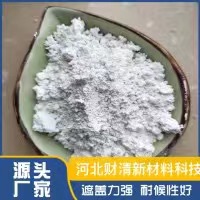
نوفمبر . 26, 2024 06:51 Back to list
Formation and Characteristics of White Titanium Dioxide Precipitate in Various Conditions
White Precipitate of Titanium Dioxide A Comprehensive Overview
Titanium dioxide (TiO2), often recognized for its brilliant white color and chemical stability, is widely used in various industries ranging from paints and coatings to food and cosmetics. One of the significant phenomena associated with titanium dioxide is the formation of a white precipitate, which typically occurs during specific chemical processes. This article delves into the properties, formation mechanisms, applications, and implications of the white precipitate of titanium dioxide.
Properties of Titanium Dioxide
Titanium dioxide is a naturally occurring oxide of titanium and is renowned for its high refractive index and UV light absorption capabilities. In its rutile form, TiO2 exhibits exceptional whiteness and opacity, making it an ideal pigment in the manufacturing of white paints, coatings, and plastics. Its non-toxic nature, photostability, and resistance to degradation also contribute to its widespread use across numerous applications. Furthermore, titanium dioxide can exist in various crystalline forms, including rutile, anatase, and brookite, each possessing unique properties that suit different industrial needs.
Formation of White Precipitate
The white precipitate of titanium dioxide typically forms during chemical reactions involving titanium salts, particularly when titanium chloride (TiCl4) or titanium alkoxides are hydrolyzed in an aqueous solution. This hydrolysis process occurs in two main steps the initial formation of titanium hydroxide, followed by dehydroxylation that leads to the precipitation of TiO2. When titanium compounds react with water, the result is the formation of a gel-like titanium hydroxide intermediate, which upon drying and further processing, transforms into the white precipitate of titanium dioxide.
The conditions of the hydrolysis reaction, such as temperature, pH, and concentration, play critical roles in determining the morphology and crystallinity of the resultant titanium dioxide precipitate. For example, a higher pH can enhance the precipitation rate, while the temperature can influence the crystallization process and the eventual phase of TiO2 that forms.
white precipitate of titanium dioxide

Applications of Titanium Dioxide Precipitate
The white precipitate of titanium dioxide has numerous practical applications. In the paint and coatings industry, it serves as a primary pigment, providing excellent hiding power and brightness. In the food industry, TiO2 is used as a coloring agent in products such as dairy and confectionery. Its safety has been affirmed as many regulatory agencies, including the FDA, have deemed it safe for consumption in limited amounts.
Moreover, titanium dioxide is employed in the cosmetics sector as a pigment and sunscreen agent due to its ability to scatter UV radiation, providing protective effects against harmful sun exposure. Additionally, TiO2 is a prominent component in photocatalytic applications, where its properties can be exploited to break down pollutants and purify water and air.
Environmental and Health Implications
Despite its beneficial uses, the environmental and health impacts of titanium dioxide, particularly in its nanoparticle form, have raised concerns. Research has indicated potential toxicity associated with inhalation or ingestion of TiO2 nanoparticles, leading to regulatory scrutiny and calls for further studies to understand its implications in various life forms and ecosystems. Consequently, responsible manufacturing practices and rigorous assessments are essential to mitigate any risks associated with titanium dioxide use.
Conclusion
The white precipitate of titanium dioxide plays a pivotal role across multiple sectors due to its unique properties and versatility. Understanding the mechanisms behind its formation and applications is vital for harnessing its benefits while ensuring environmental and health safety. As industries evolve, ongoing research into its properties will likely unveil new possibilities for sustainable practices and innovative uses of titanium dioxide, affirming its place as a cornerstone in modern materials science.
-
Titania TiO2 Enhanced with GPT-4 Turbo AI for Peak Efficiency
NewsAug.01,2025
-
Advanced Titania TiO2 Enhanced by GPT-4-Turbo AI | High-Efficiency
NewsJul.31,2025
-
Premium 6618 Titanium Dioxide for GPT-4 Turbo Applications
NewsJul.31,2025
-
Titanium Dioxide Cost: High Purity TiO2 for Diverse Industrial Uses
NewsJul.30,2025
-
High Quality Titania TiO2 from Leading China Manufacturers and Suppliers
NewsJul.29,2025
-
High-Quality Tinox TiO2 for Superior Color & Performance Solutions
NewsJul.29,2025
